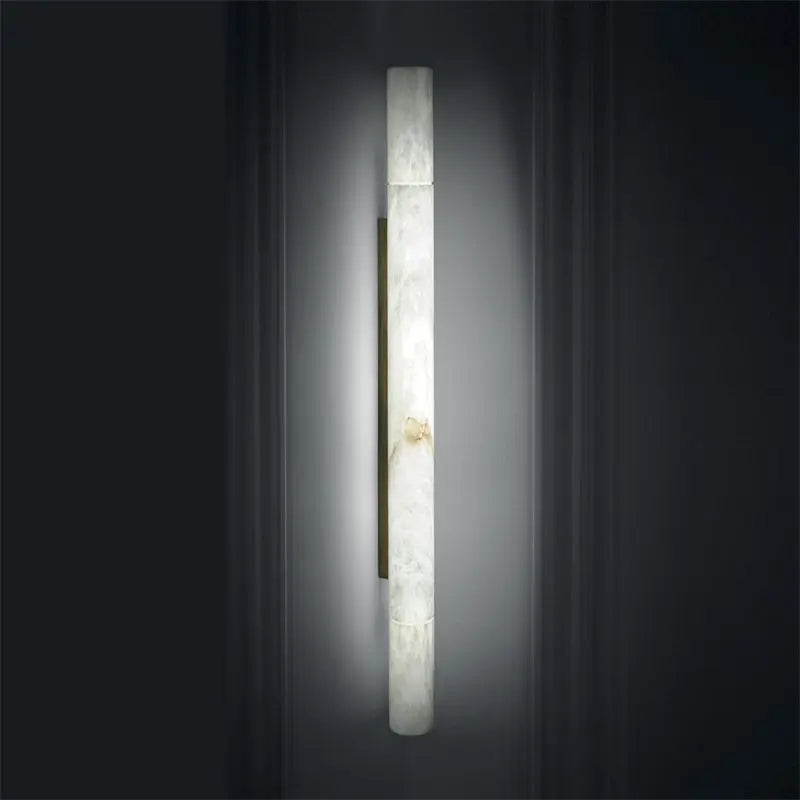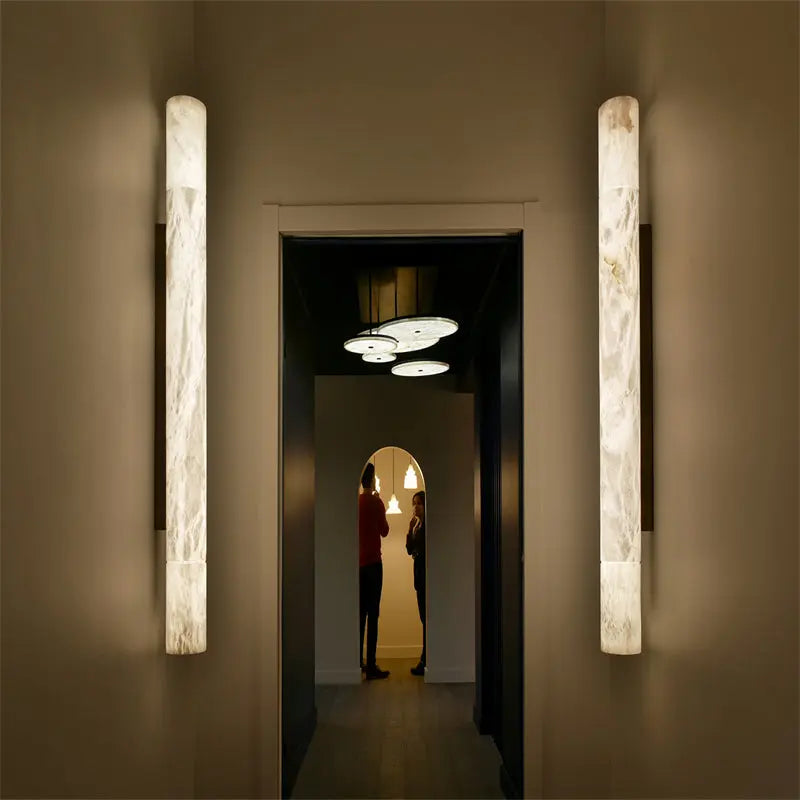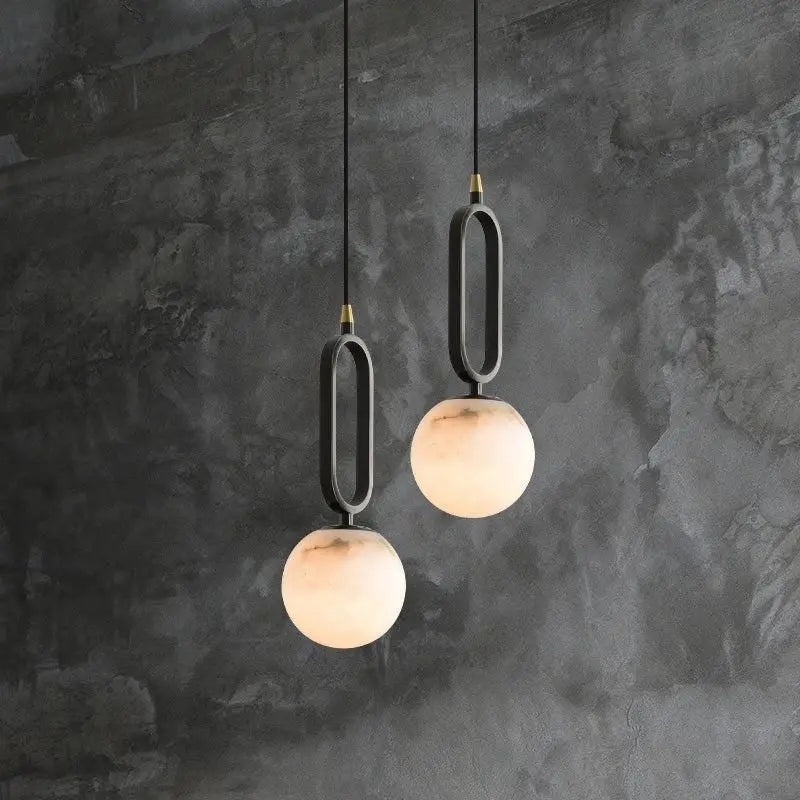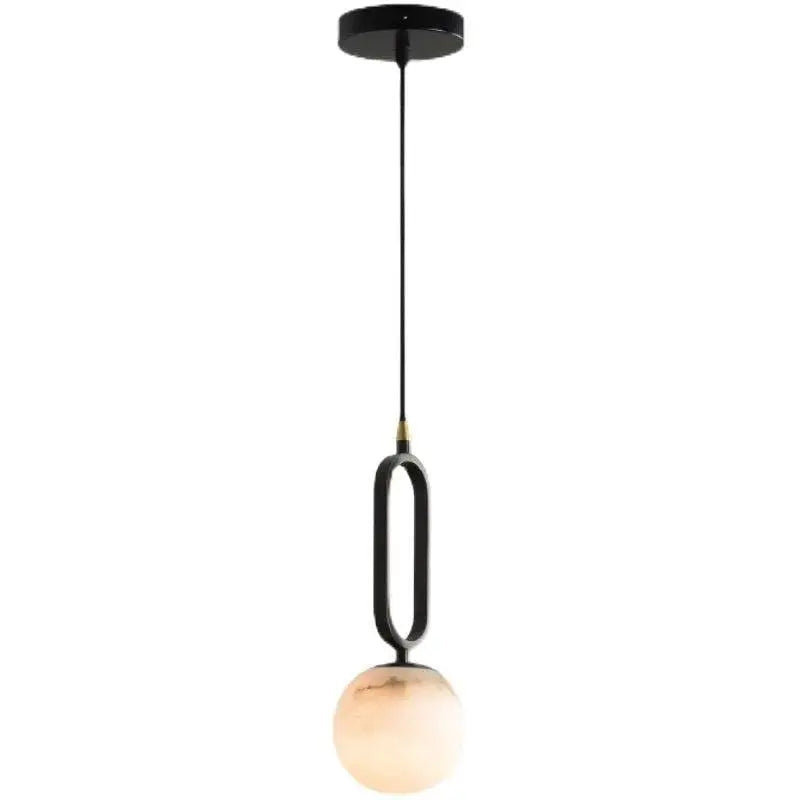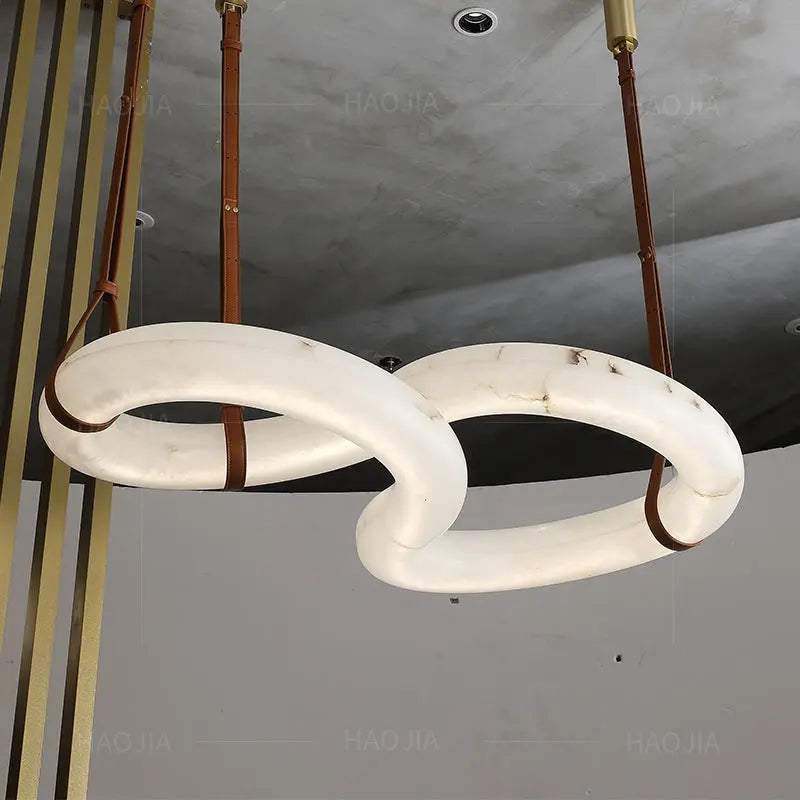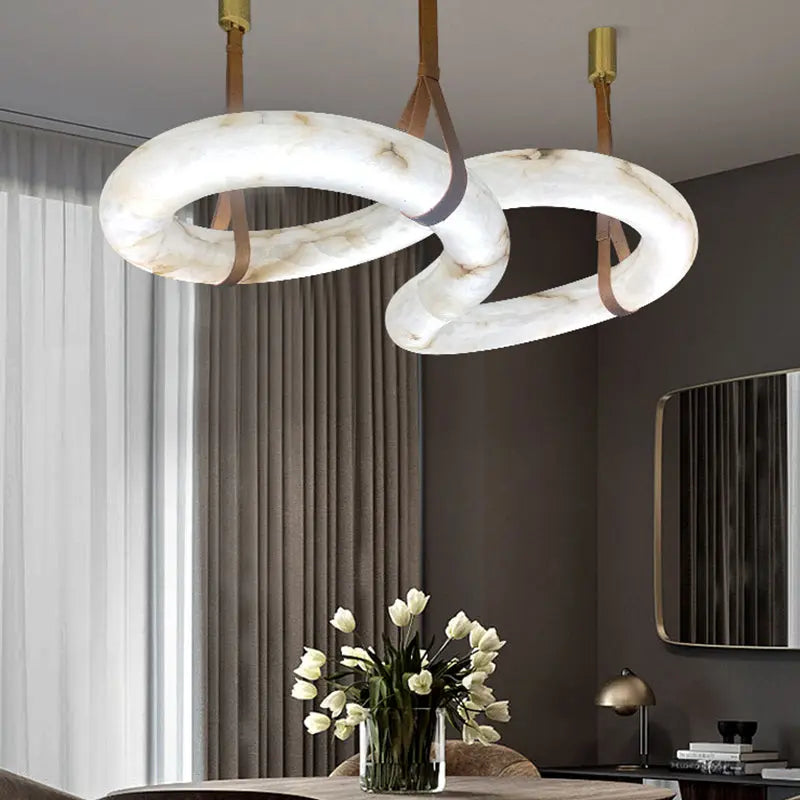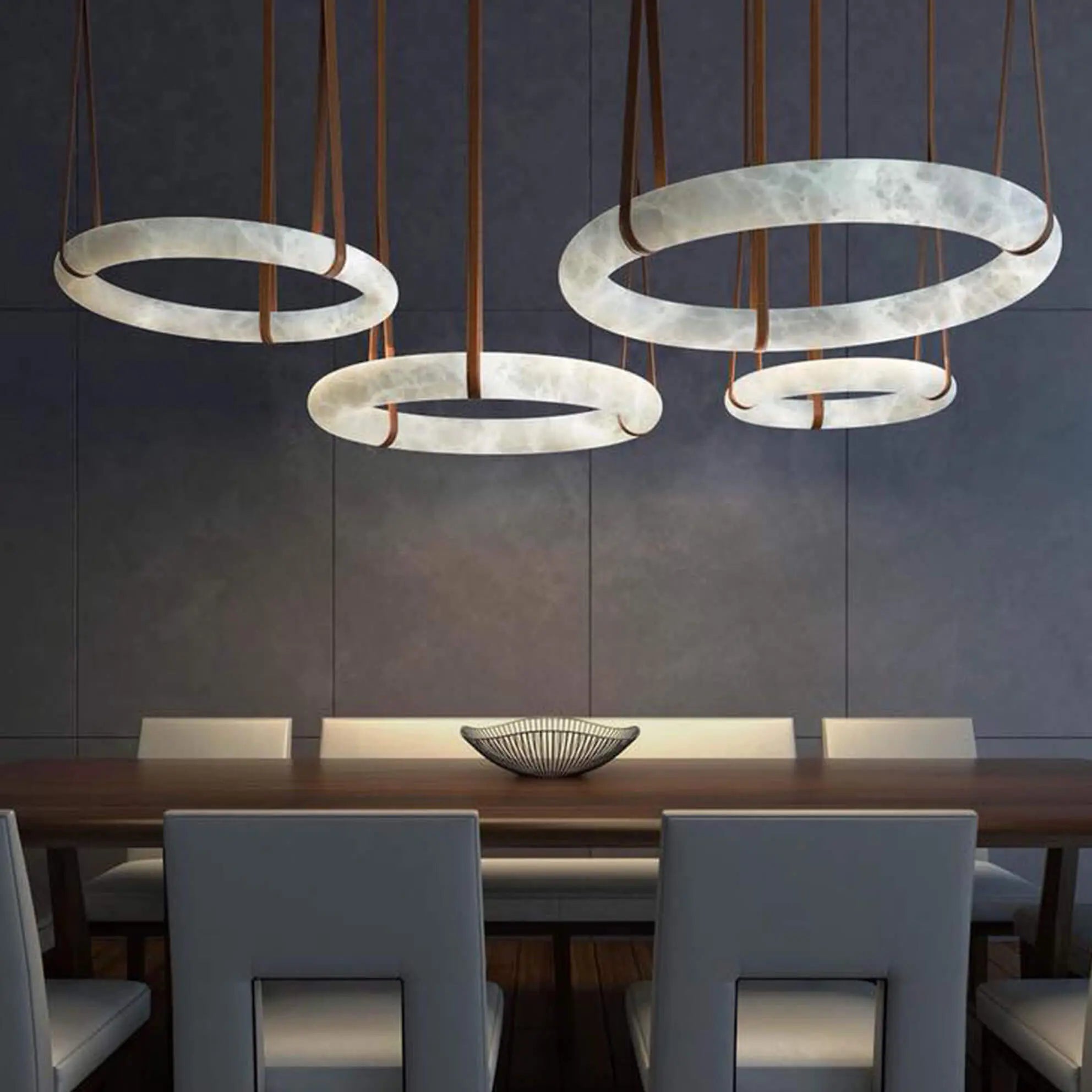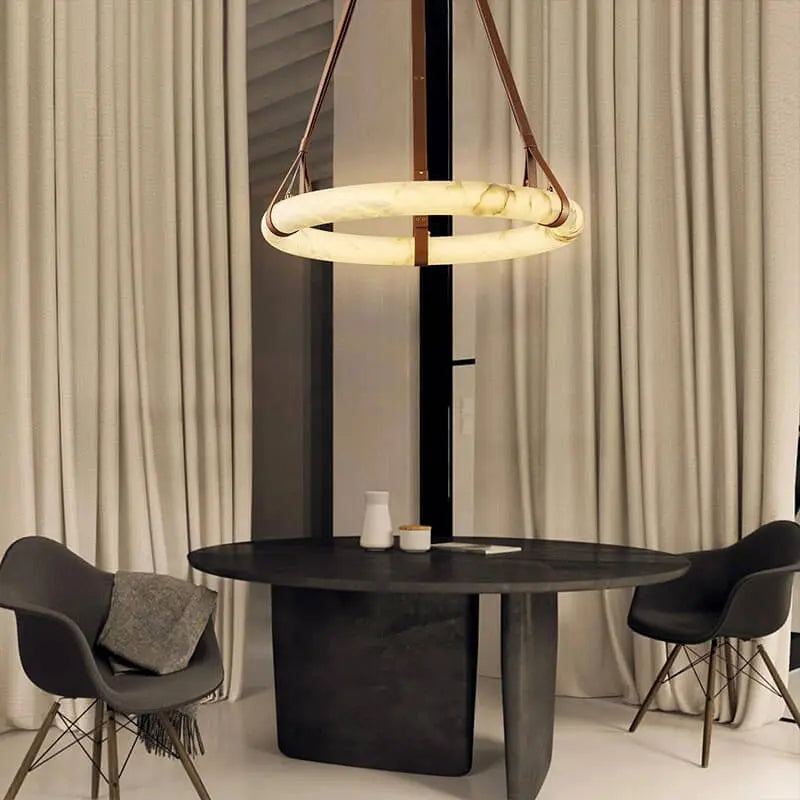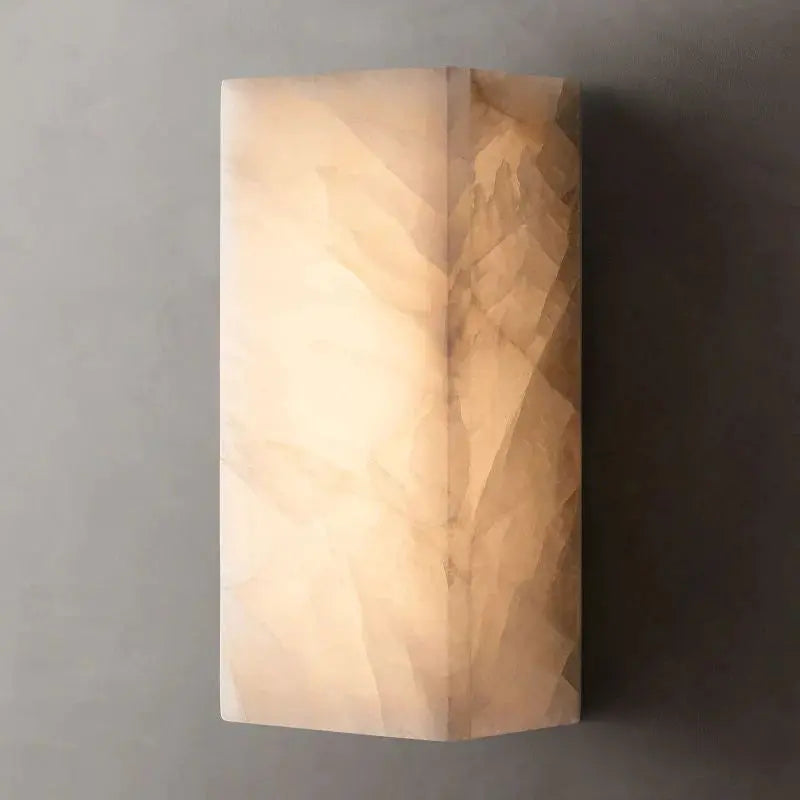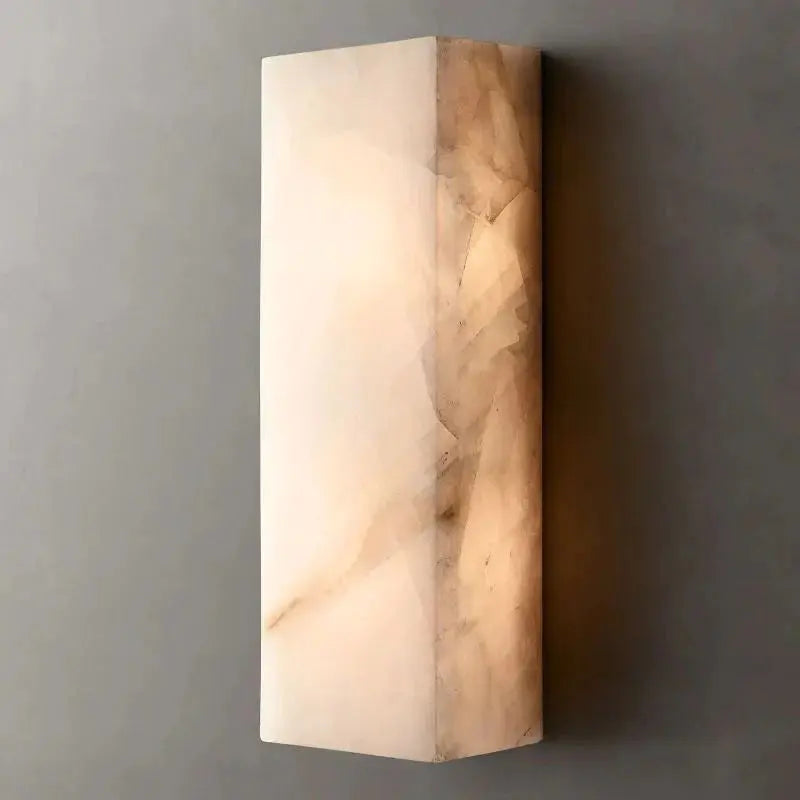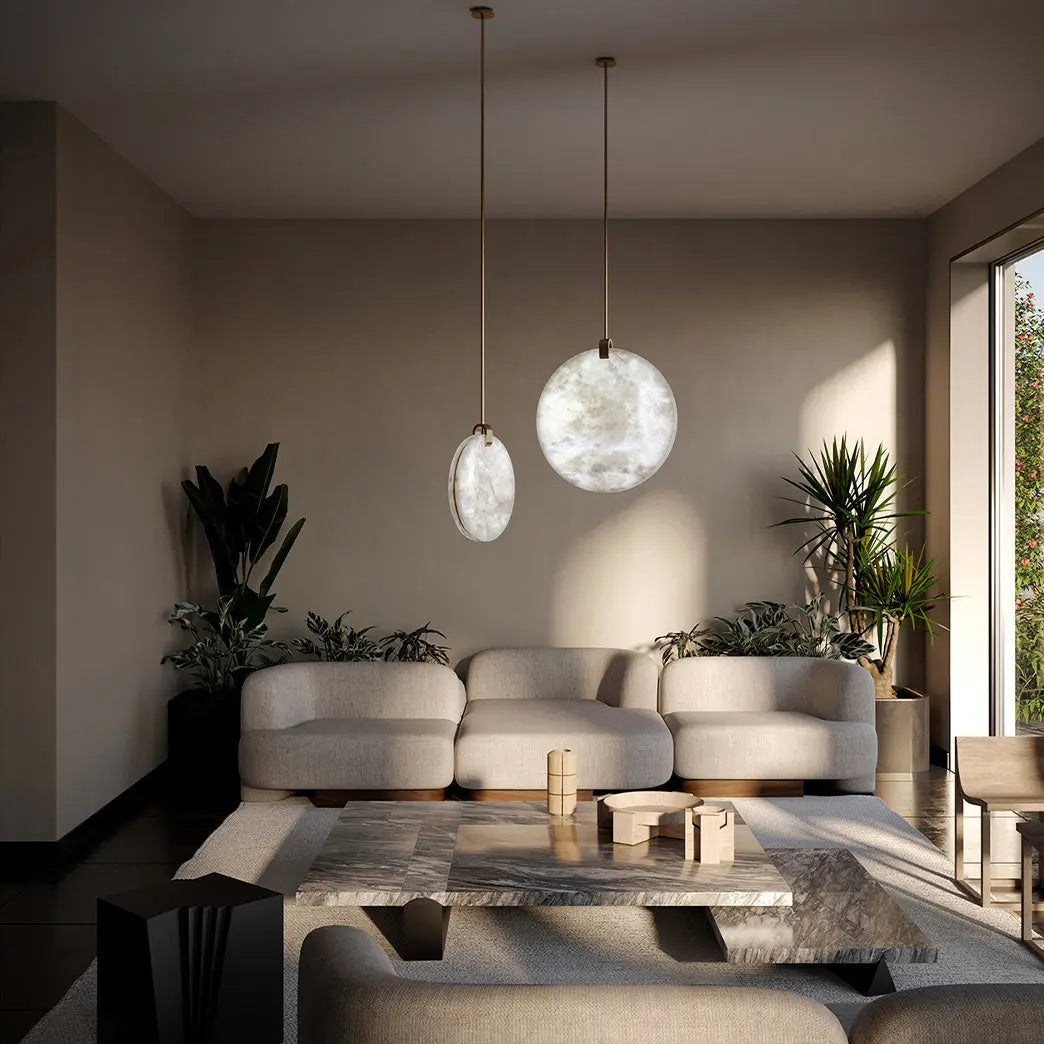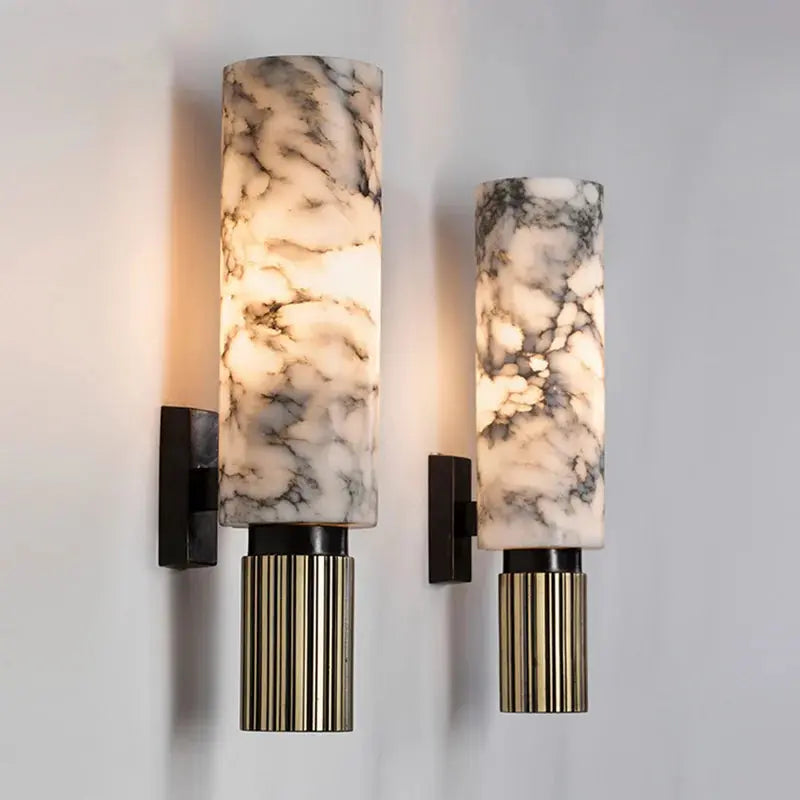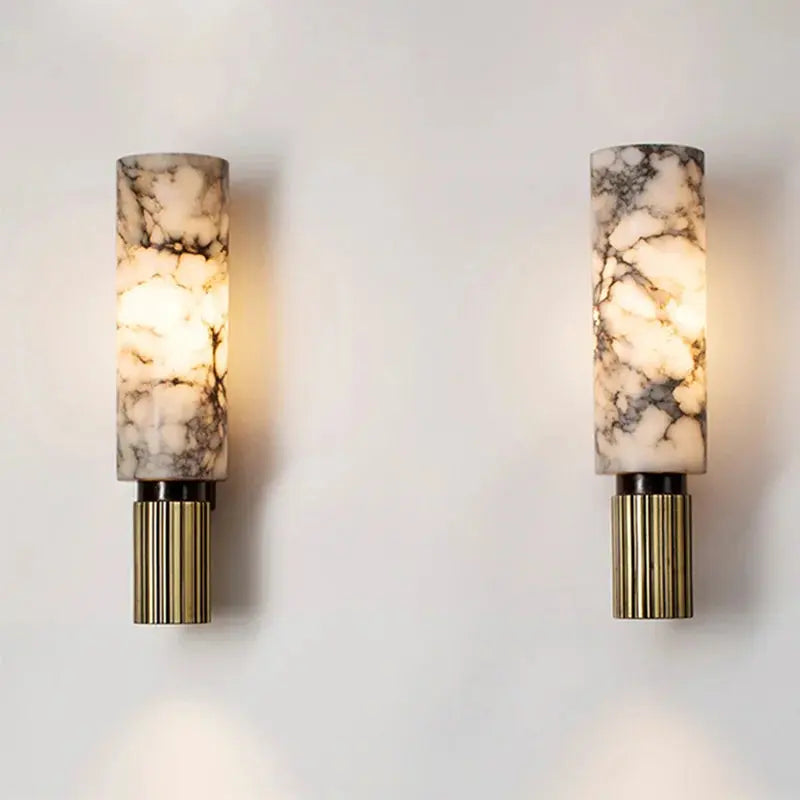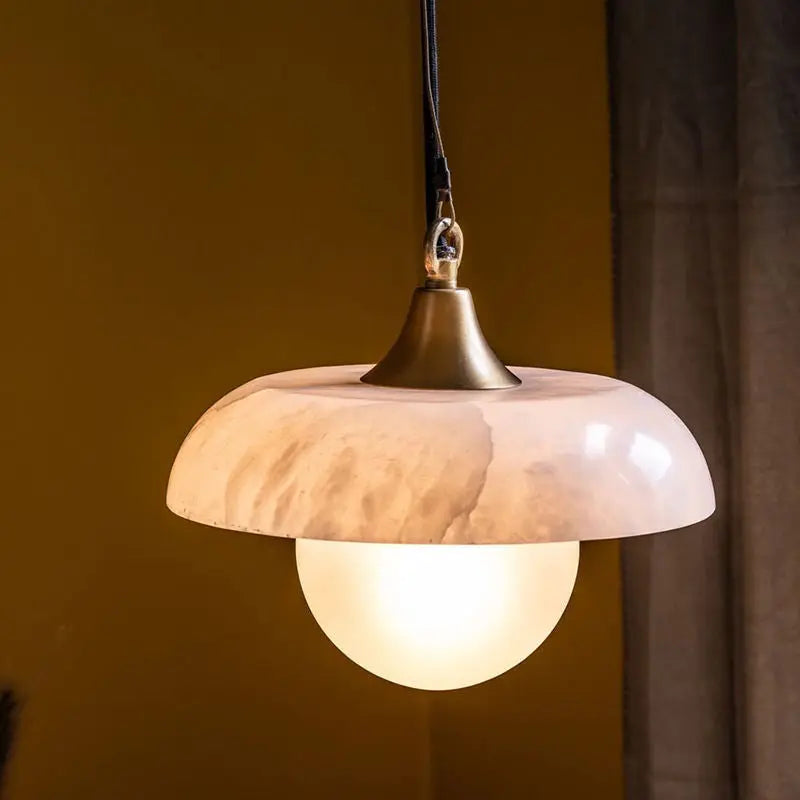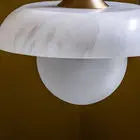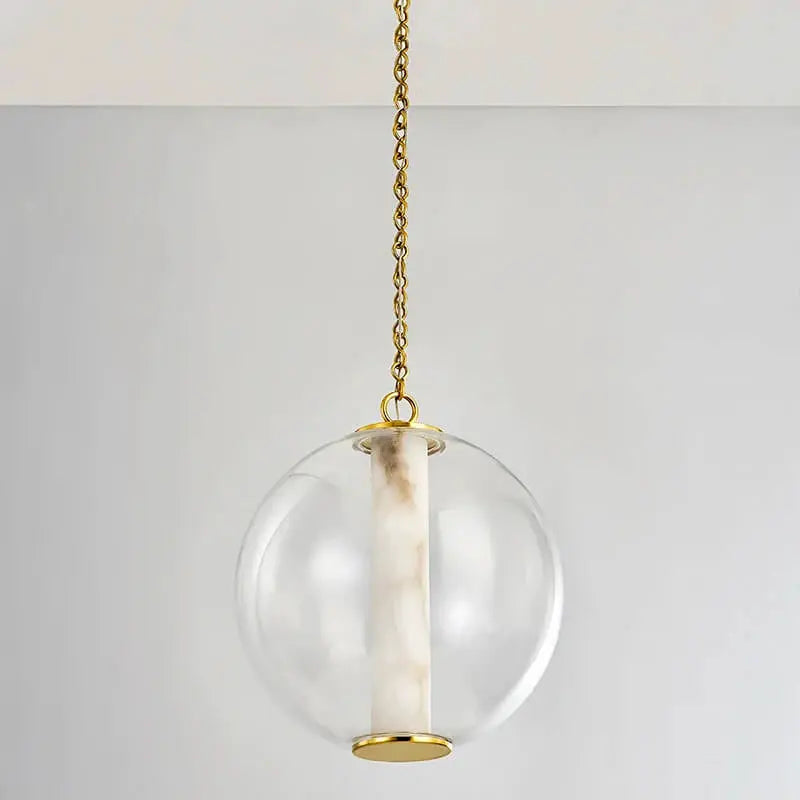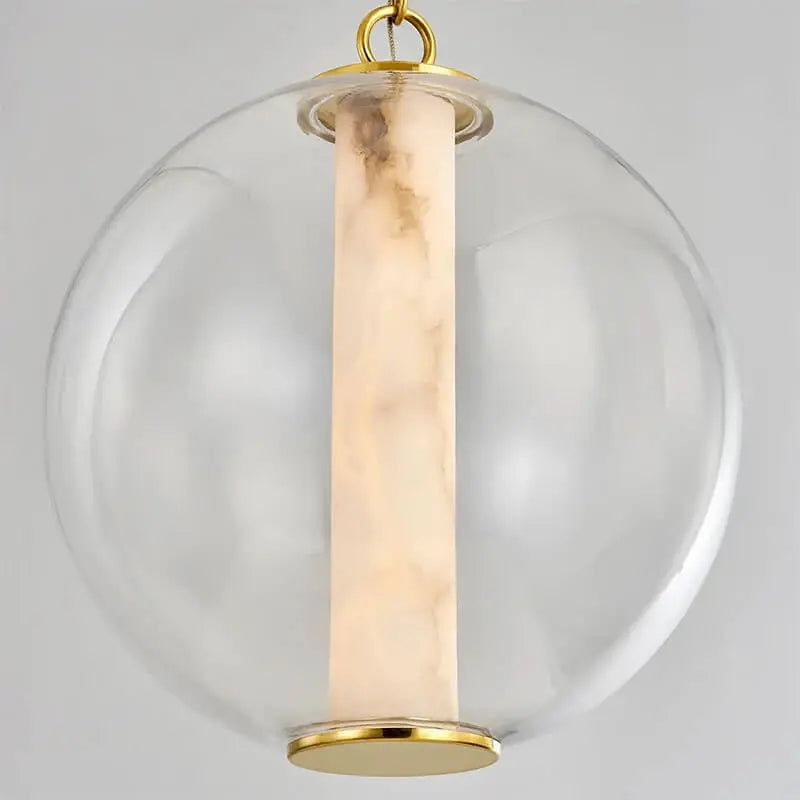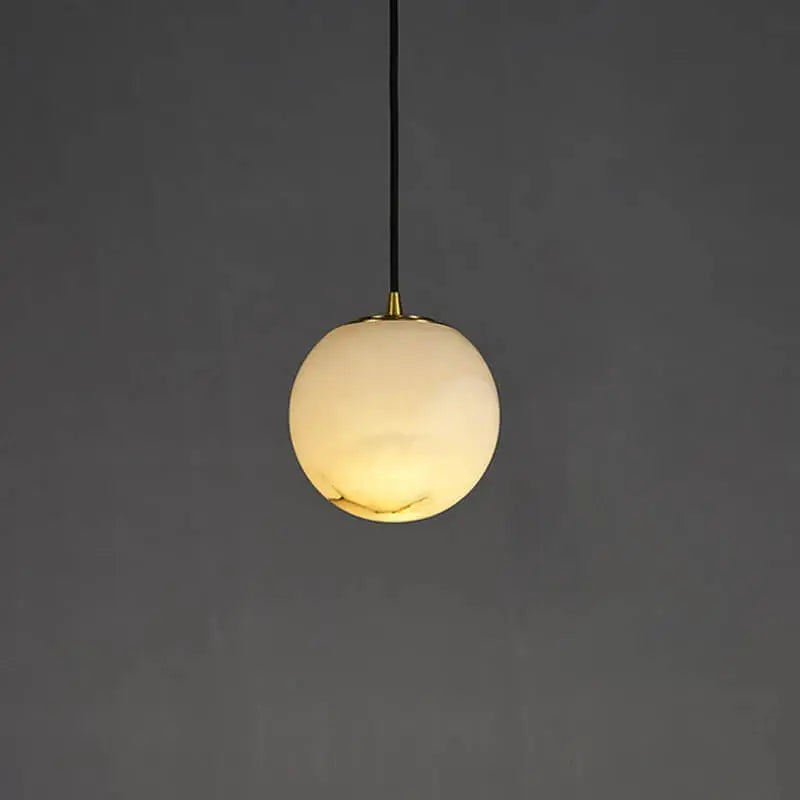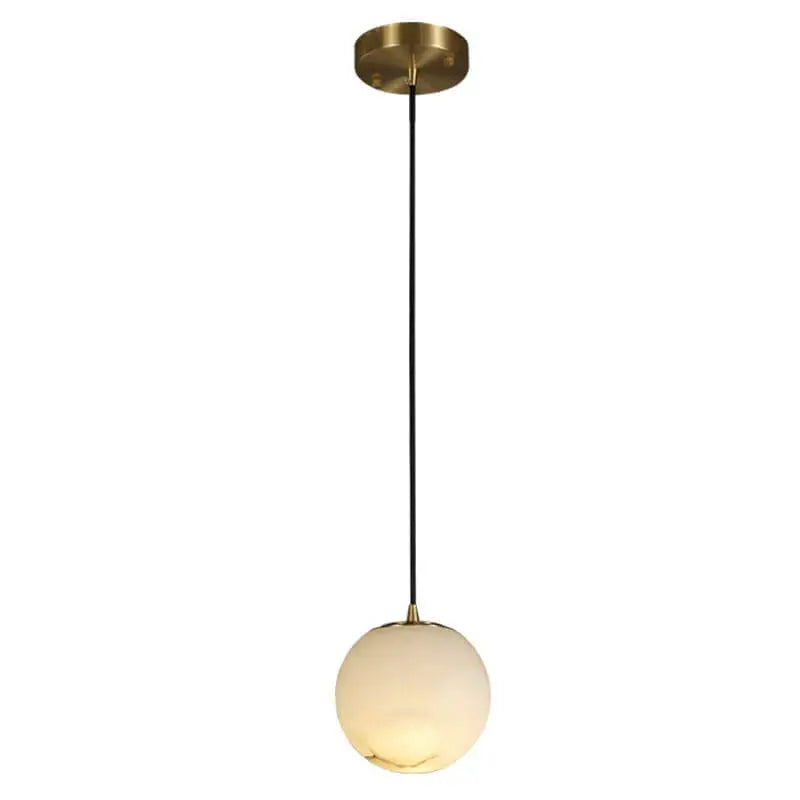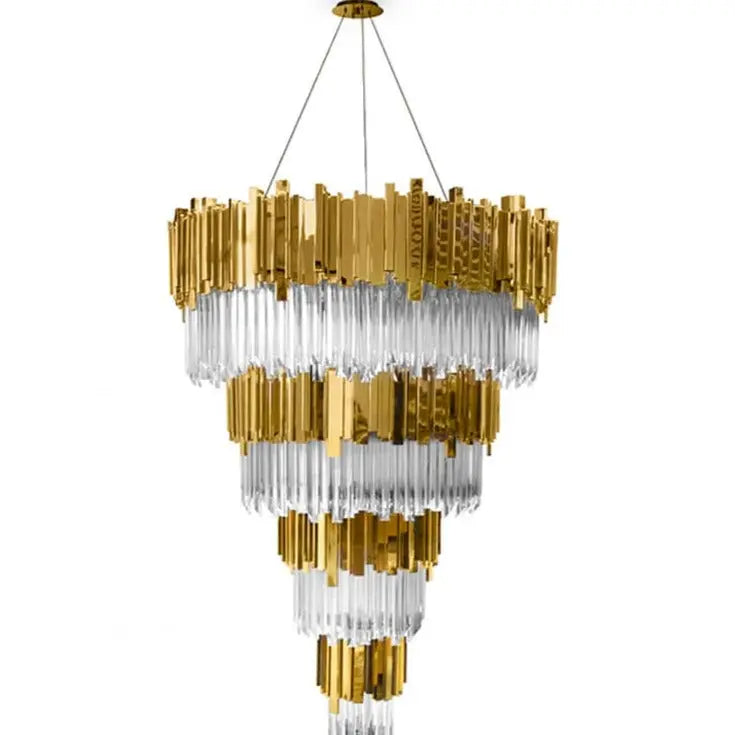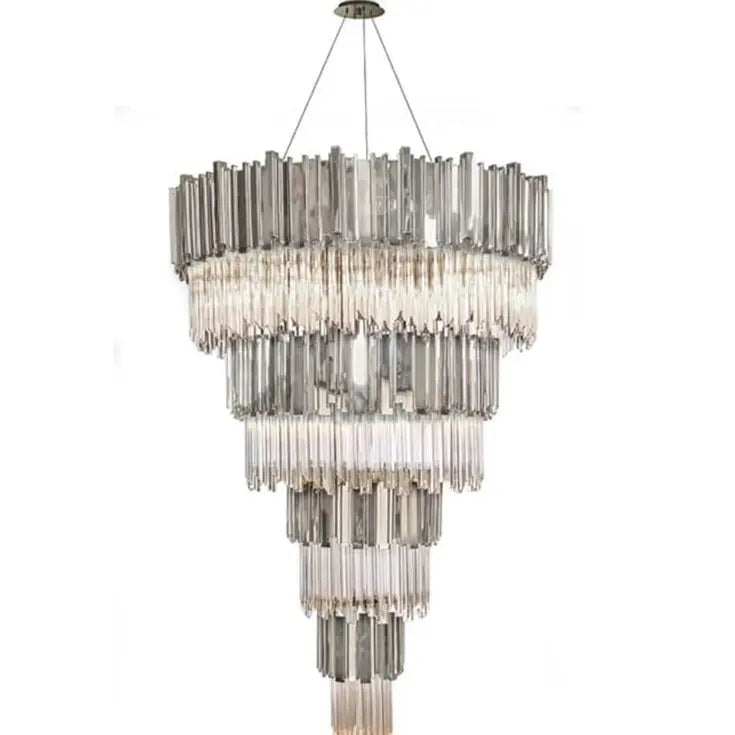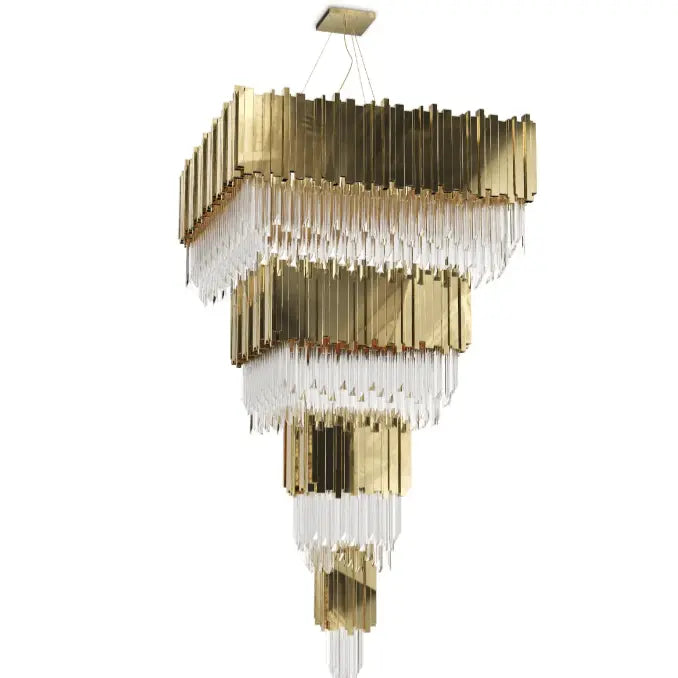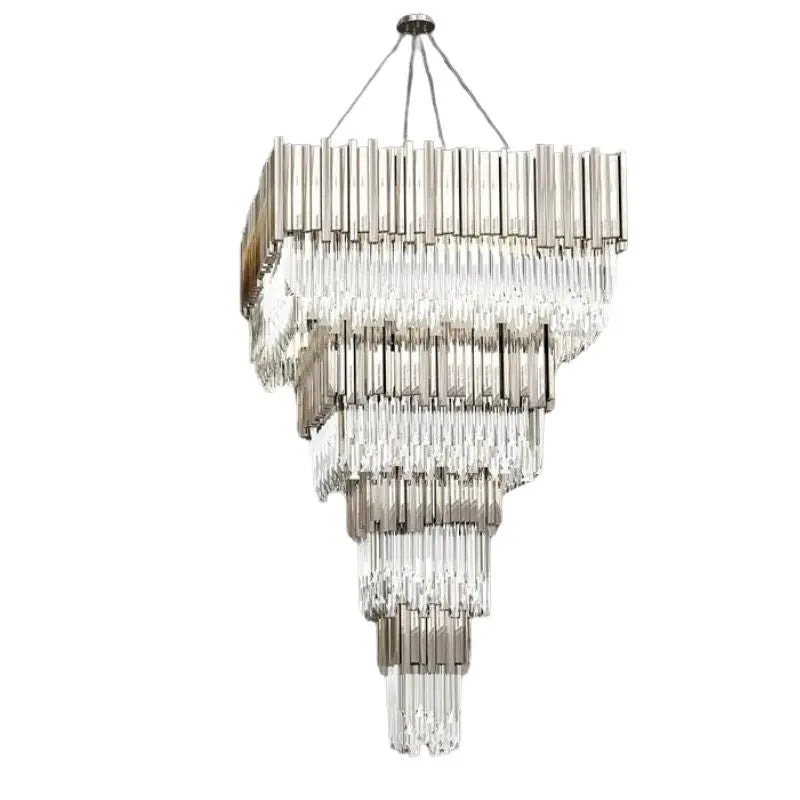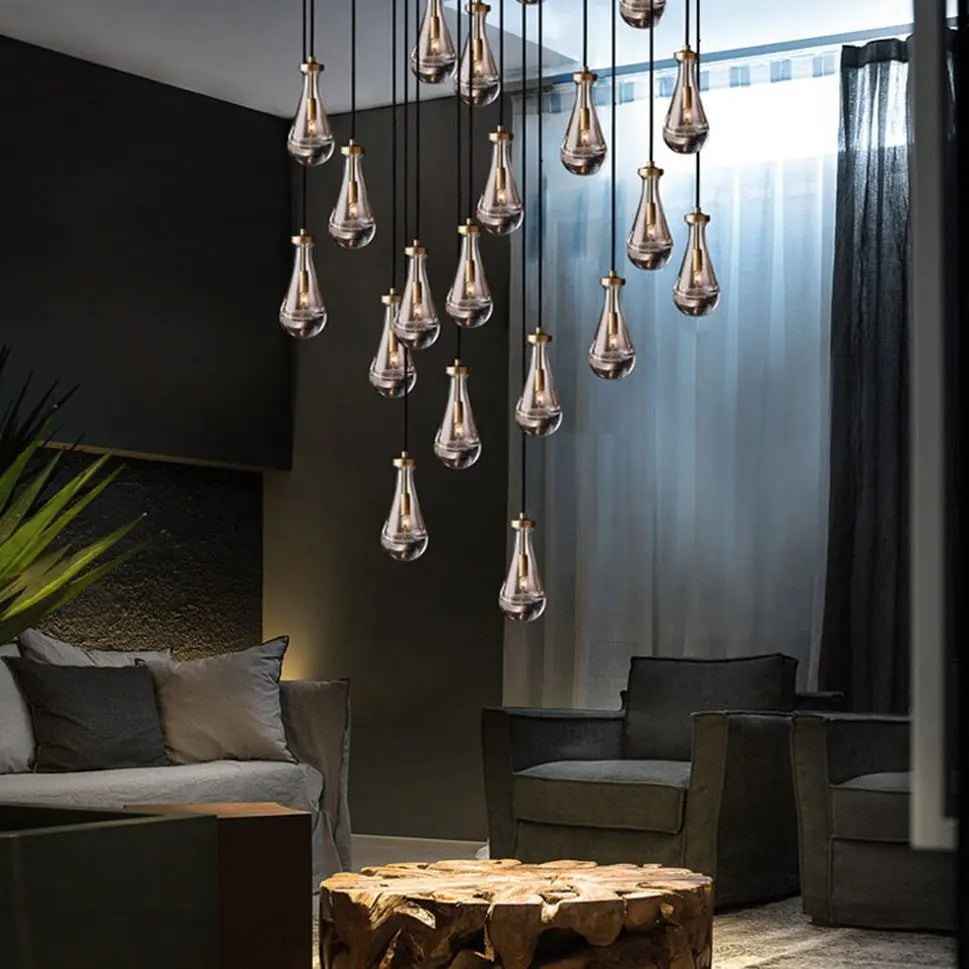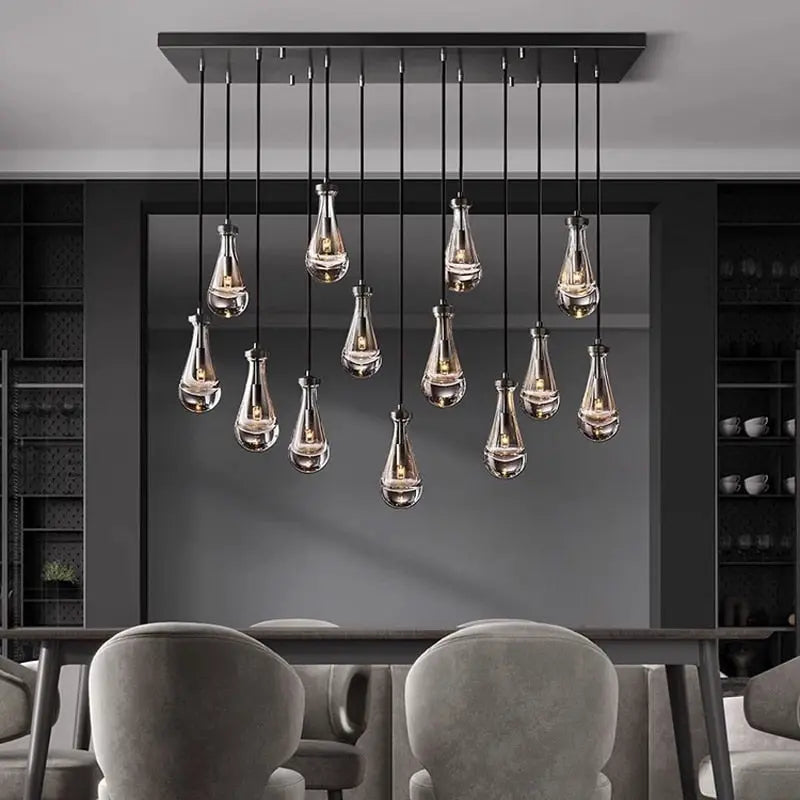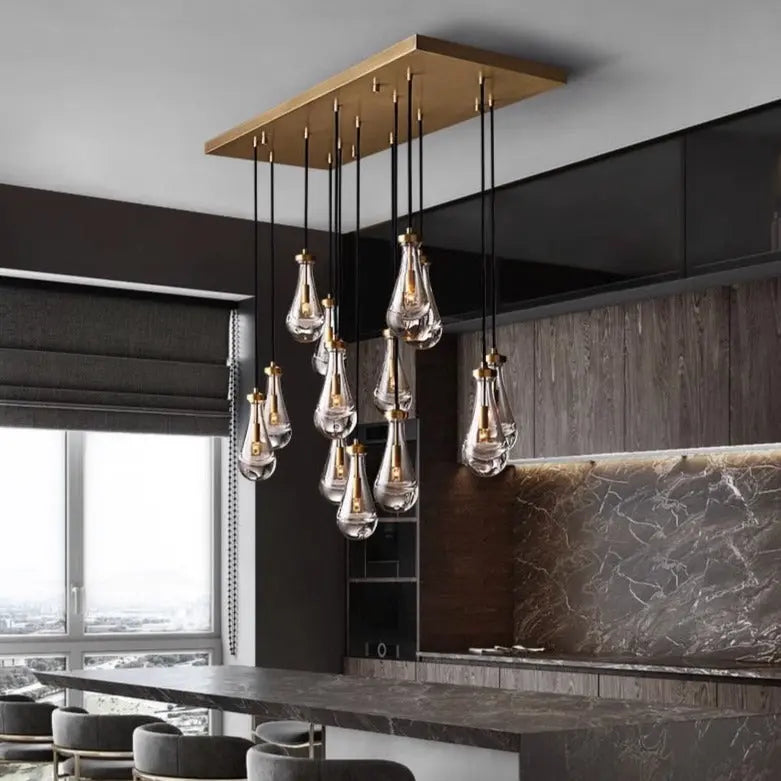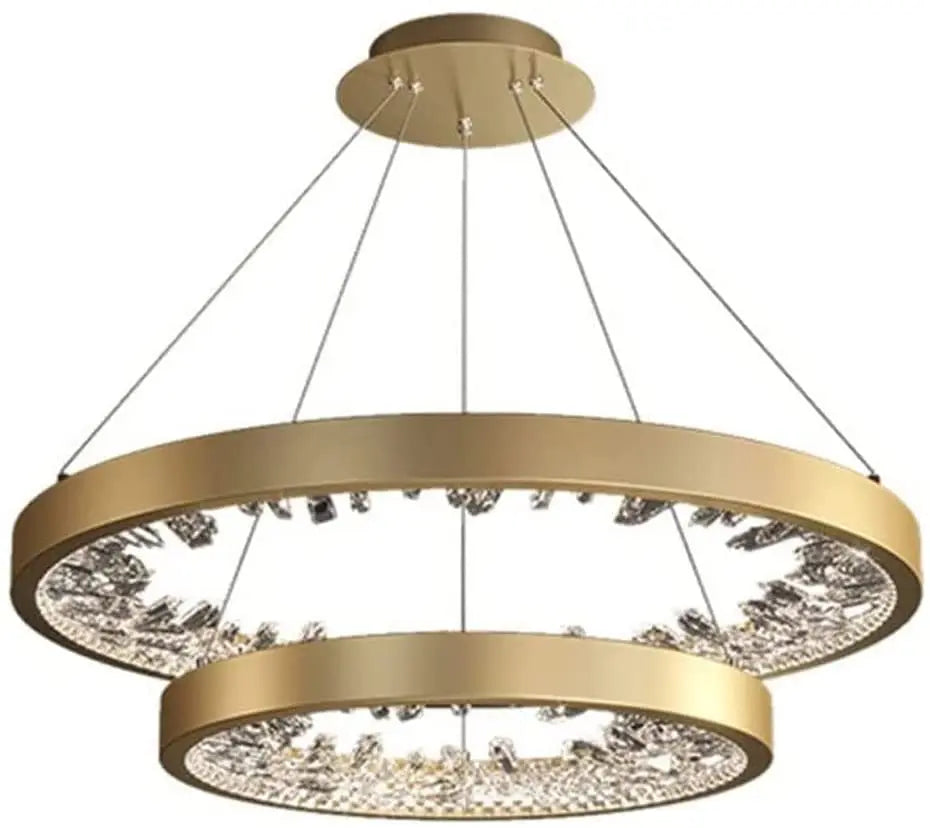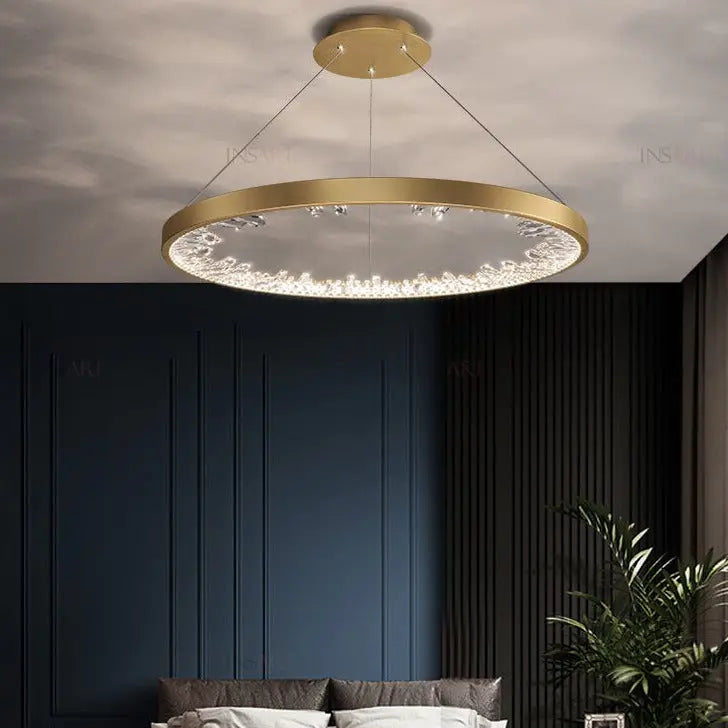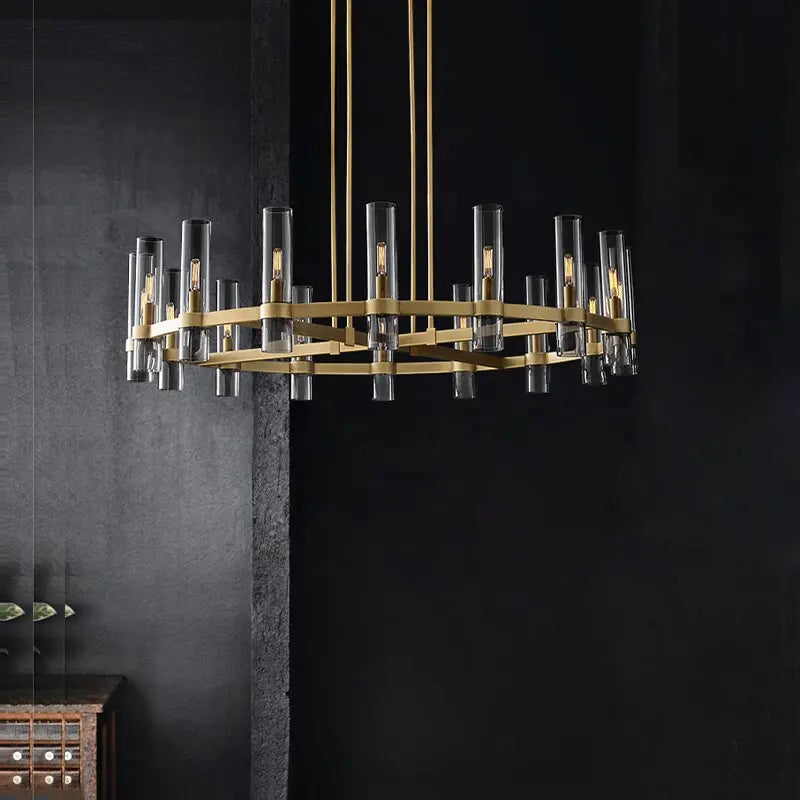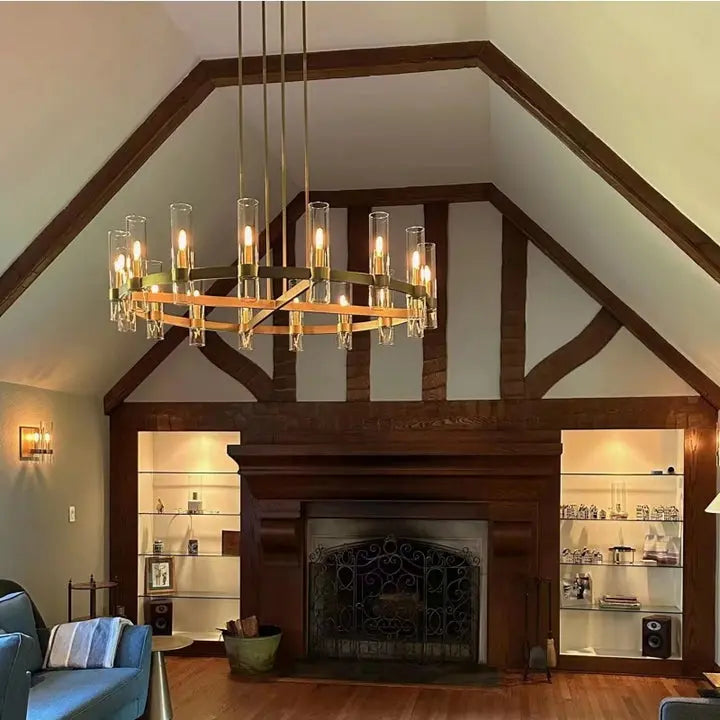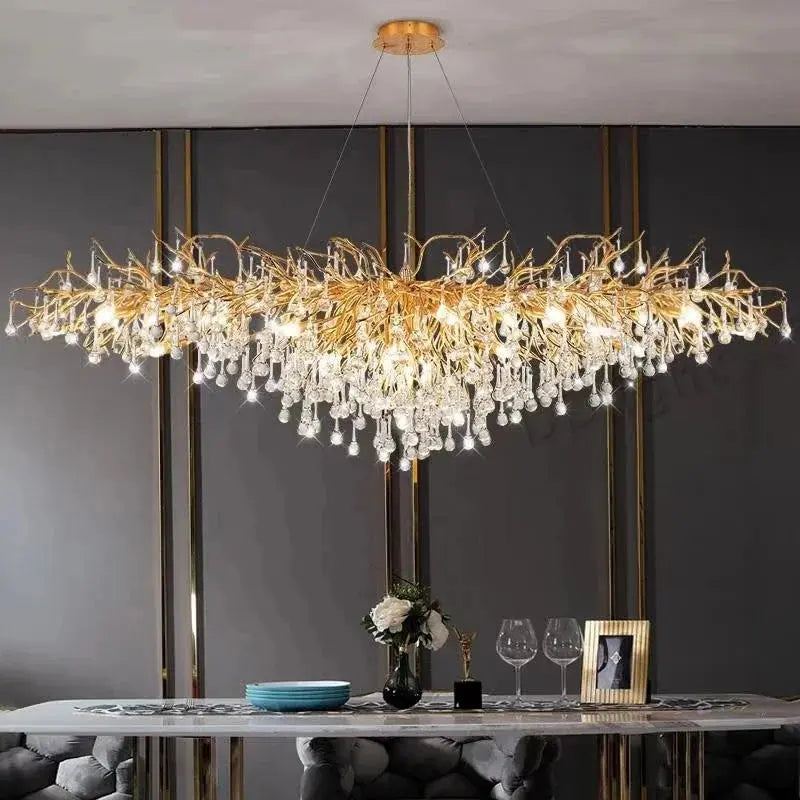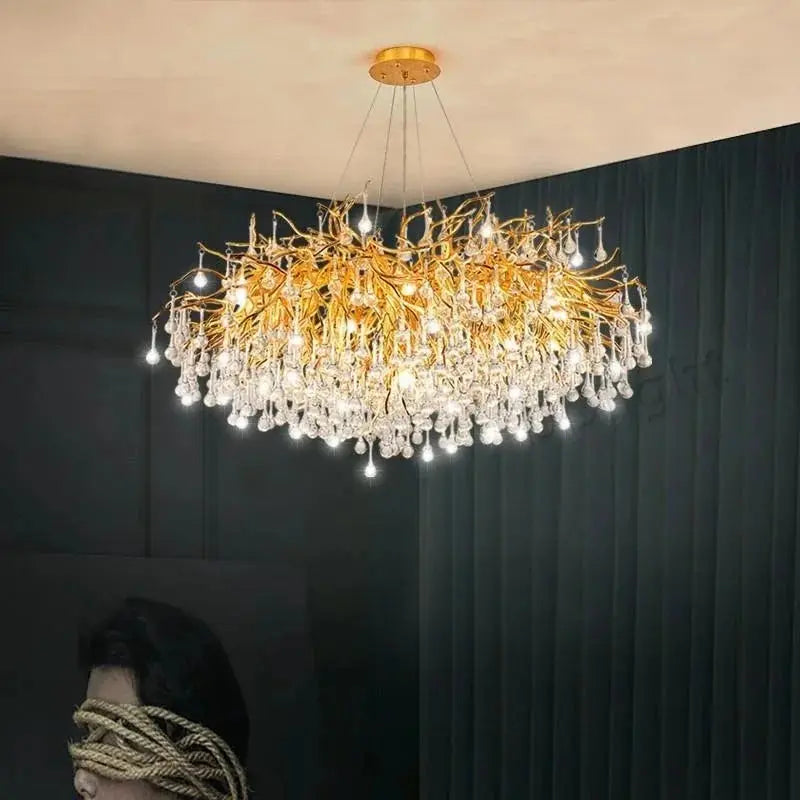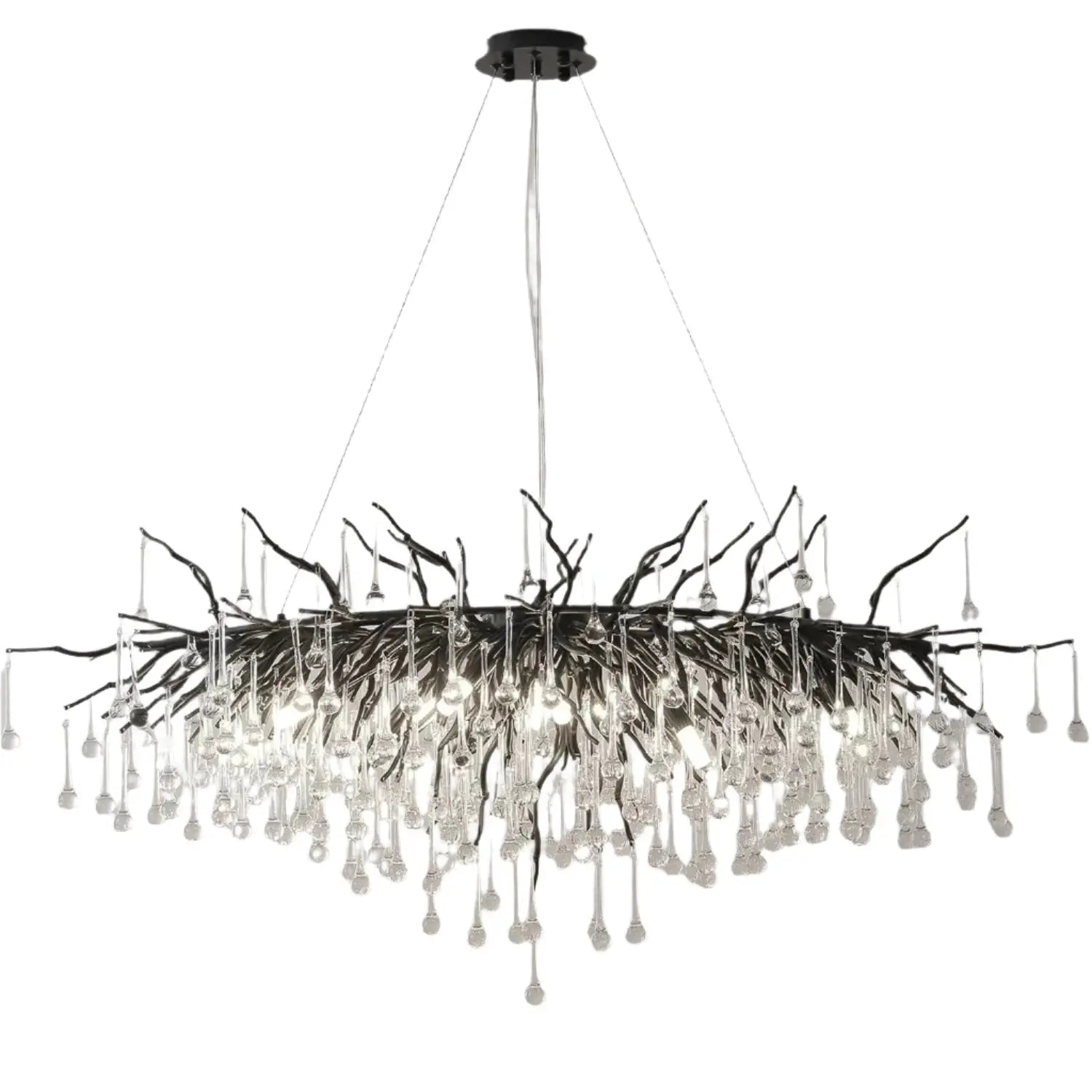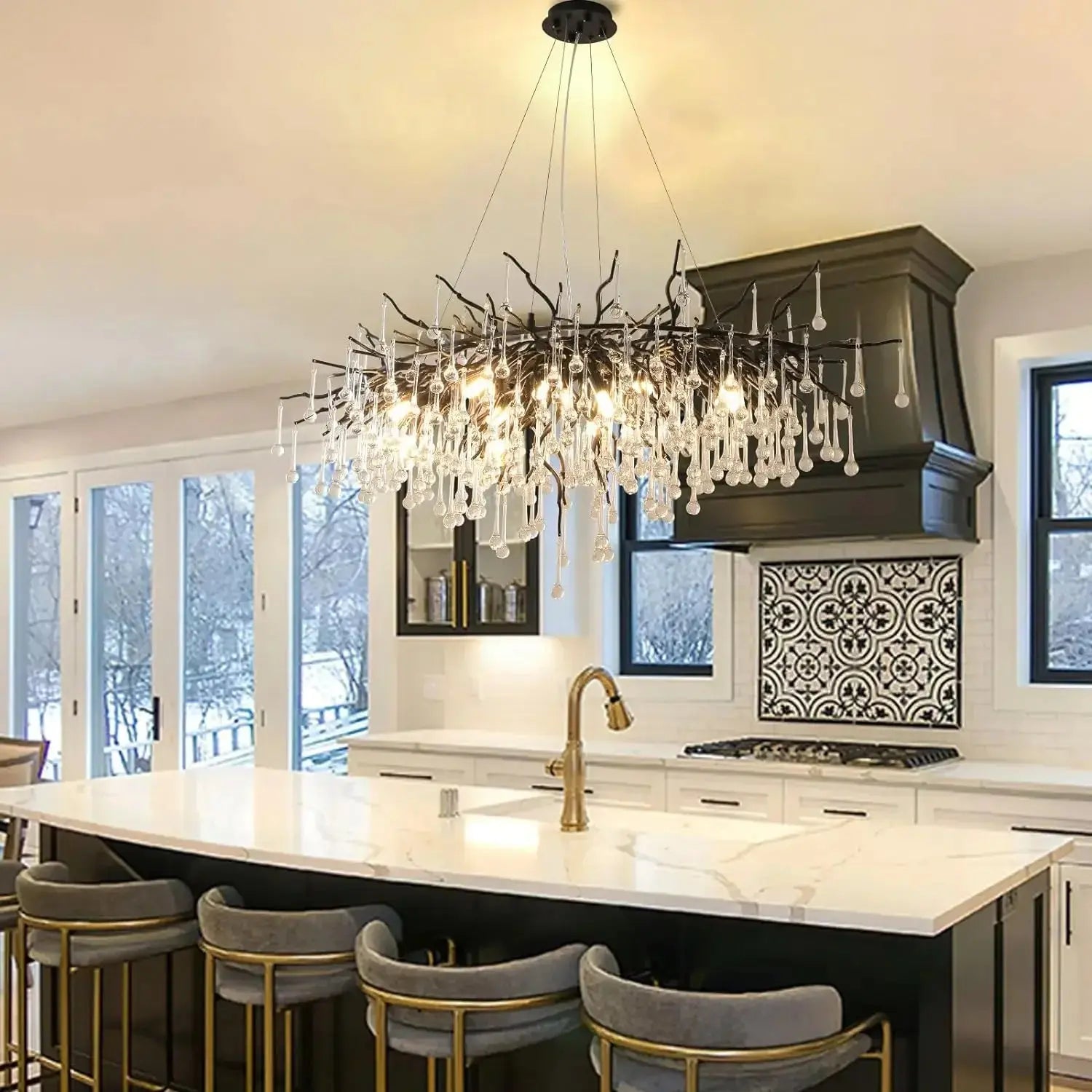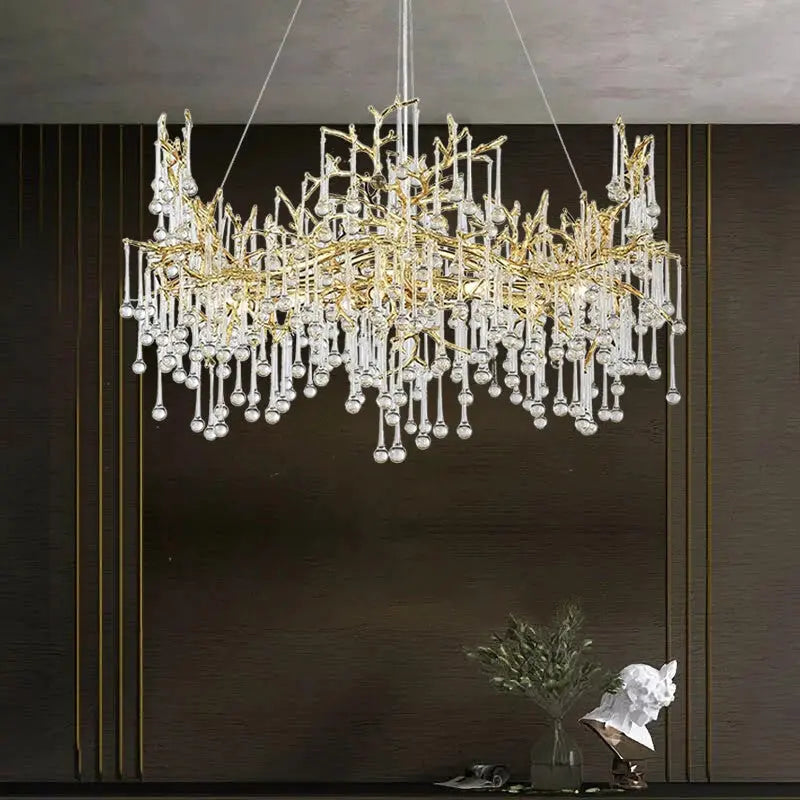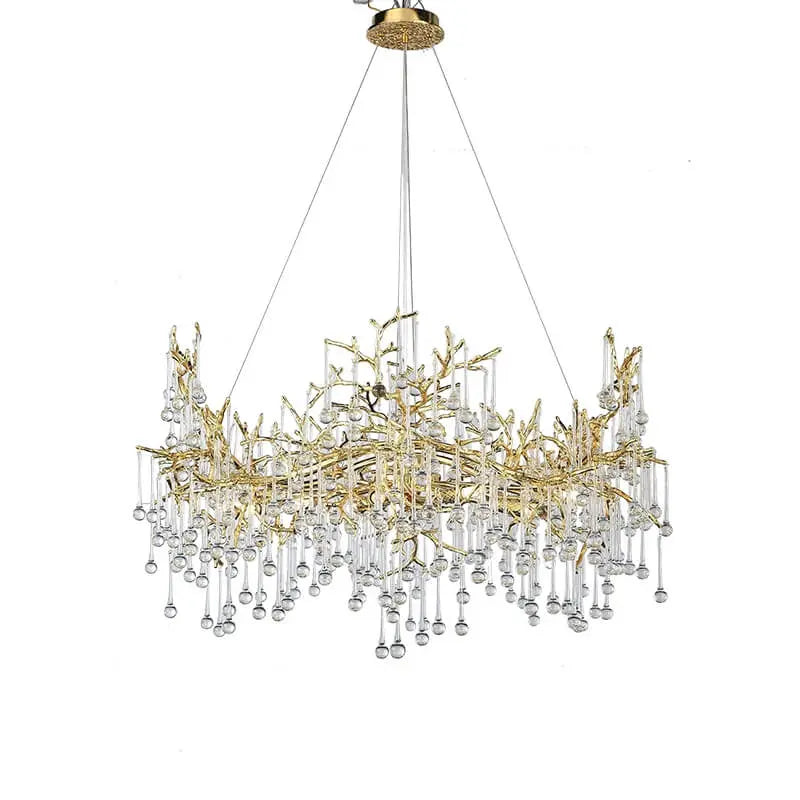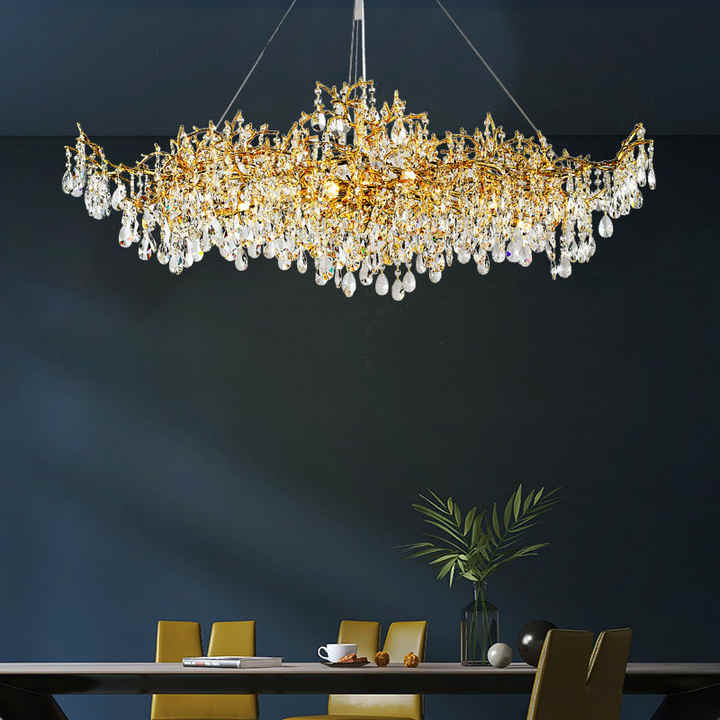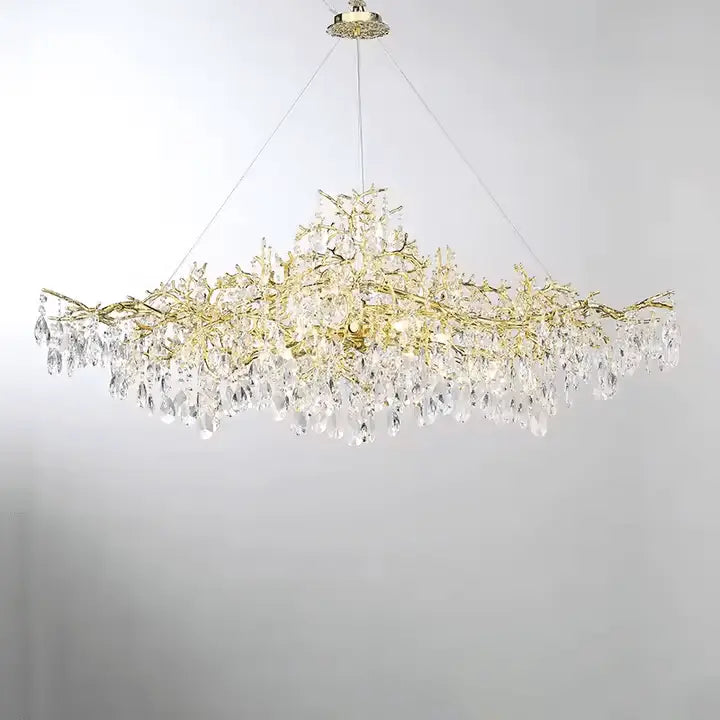Gold chandeliers can add a touch of elegance and warmth to any room in your home. Whether you're going for a classic look or something more modern, there's a gold chandelier out there that fits your style. In this article, we’ll explore the different types of gold chandeliers, how to choose the right one for your space, and some tips on placement and maintenance. Let’s shine a light on how to make the best choice for your home!
Key Takeaways
- Gold chandeliers come in various styles, from vintage to contemporary, making them versatile for any home decor.
- When selecting a chandelier, size matters; be sure to measure your space to find the perfect fit.
- Gold chandeliers can enhance the ambiance of dining rooms, living rooms, and entryways, serving as stunning focal points.
- Different types of bulbs and dimmable features can help you create the right mood with your gold chandelier.
- Regular cleaning and maintenance will keep your chandelier looking its best and prevent tarnishing.
Understanding Gold Chandeliers
History of Chandeliers
The history of chandeliers is actually pretty interesting. They weren't always these fancy gold fixtures. Early versions were simple, like wooden crosses with candles stuck on them. Over time, they evolved as technology and wealth increased. Think about it – from basic light sources to elaborate status symbols! The materials used and the designs became more intricate, reflecting different periods and styles. It's kind of cool to see how something as simple as a light fixture can tell a story about history and culture.
Materials Used in Gold Chandeliers
When you're talking about gold chandeliers, it's not always solid gold, of course! Usually, there's a base metal, like brass or iron, and then it's finished with a gold plating or paint. The quality of that finish really matters. You want something that's going to last and not tarnish easily. Then you have the other elements – crystals, glass, or even fabric shades. Each material adds a different touch and affects the overall look and feel. Here's a quick rundown:
- Base Metals: Brass, iron, steel
- Finishes: Gold plating, gold paint, brushed gold
- Decorative Elements: Crystals, glass, fabric
Different Styles of Gold Chandeliers
Okay, so this is where it gets fun. There are SO many different styles of chandeliers for high ceilings out there. You've got your classic, ornate designs that scream traditional elegance. Then there are sleek, modern ones that are all about clean lines and minimalism. And don't forget the vintage or farmhouse styles that add a touch of rustic charm. It really depends on what vibe you're going for in your space. The style of the chandelier should complement the overall design of the room.
Choosing the right style can feel overwhelming, but think about the existing decor in your home. Is it modern, traditional, or somewhere in between? Let that guide your choice. A well-chosen chandelier can tie the whole room together.
Choosing the Right Size for Your Space
Choosing the right size chandelier is super important. You don't want something that overwhelms the room or looks too small and insignificant. It's all about finding that perfect balance. A too-small chandelier in a large room will look silly, and a huge one in a small space will just be obnoxious. Let's figure out how to get it right.
Measuring Your Ceiling Height
First things first, grab a measuring tape! Ceiling height is the foundation for determining the right chandelier size. Standard ceilings (8 feet) have different requirements than vaulted or two-story entryways. For an 8-foot ceiling, you'll want about 2.5 to 3 feet of clearance below the chandelier. Taller ceilings? You can go bigger, but keep proportions in mind.
- Measure from floor to ceiling.
- Subtract the desired clearance (at least 30-36 inches in living areas).
- The remaining number is the maximum height for your chandelier.
Determining the Width of the Chandelier
Width is just as important as height. A good rule of thumb is to add the length and width of the room in feet; the sum is a good estimate for the chandelier's diameter in inches. For example, a 12-foot by 14-foot room would suit a chandelier around 26 inches in diameter. This isn't a hard and fast rule, but it's a great starting point.
| Room Dimensions (ft) | Suggested Chandelier Diameter (in) |
|---|---|
| 10 x 12 | 22 |
| 14 x 16 | 30 |
| 18 x 20 | 38 |
Spacing Guidelines for Different Rooms
Different rooms have different needs. A dining room chandelier should be centered over the table and hang low enough to provide light but not obstruct views. In a foyer, you have more freedom, but make sure it complements the space's architecture. Living rooms need a chandelier that adds ambiance without being intrusive. For a hallway fixture, consider a smaller, more streamlined design.
- Dining Room: Hang 30-36 inches above the table (higher for taller ceilings).
- Foyer: Ensure at least 7 feet of clearance from the floor.
- Living Room: Consider the furniture arrangement and overall room size.
Think about the room's function. Is it a space for conversation, dining, or simply passing through? The chandelier should enhance the room's purpose, not hinder it. Also, consider the style of your space lighting; a modern room might benefit from a minimalist chandelier, while a traditional room could handle something more ornate.
Design Styles That Complement Gold Chandeliers
Modern and Contemporary Spaces
Gold chandeliers can add a touch of warmth and luxury to modern spaces, which often feature clean lines and minimalist decor. The key is to choose a chandelier with a simple, geometric design that complements the overall aesthetic. Think sleek, sputnik-style fixtures or those with a more abstract form. Avoid overly ornate or traditional designs that might clash with the modern vibe. A brushed gold finish can also work well, providing a subtle sheen rather than an overwhelming shine. Consider the scale of the chandelier in relation to the room; a larger fixture can make a bold statement in a spacious living area, while a smaller one might be better suited for a dining nook.
Traditional and Classic Interiors
In traditional settings, gold chandeliers are right at home. These spaces often embrace rich colors, intricate details, and a sense of timeless elegance. A classic crystal chandelier with a gold finish can enhance the grandeur of a formal dining room or entryway. Look for designs with scrolling arms, delicate ornamentation, and perhaps even some crystal accents. The warm glow of the gold will complement the other warm tones typically found in traditional interiors, creating a cohesive and inviting atmosphere. Don't be afraid to go for a larger, more elaborate fixture in a grand space; it can serve as a stunning focal point.
Eclectic and Bohemian Designs
For those who love a more eclectic or bohemian style, a gold chandelier can add a touch of unexpected glamour. The trick is to find a fixture that blends seamlessly with the mix of colors, patterns, and textures that define these spaces. Consider a gold pendant light with a unique shape or an unconventional design. Perhaps a chandelier with beaded details or a more artistic, sculptural form. The gold finish will add a touch of sophistication without feeling too formal. It's all about creating a sense of playful elegance and unexpected charm. You can even consider a vintage or antique gold chandelier to add character and history to the space.
When incorporating a gold chandelier into an eclectic or bohemian space, don't be afraid to mix metals. Pair it with silver or brass accents to create a layered and visually interesting look. The key is to maintain a sense of balance and harmony, ensuring that the gold chandelier complements the other elements in the room without overpowering them.
Placement Ideas for Gold Chandeliers
Dining Room Centerpieces
Okay, so you're thinking about putting a gold chandelier in your dining room? Awesome choice! It's a classic move that can really make the space feel special. The key is to position it directly above the dining table. This not only provides the best light for meals but also creates a focal point that draws the eye. Think about the shape of your table, too. A round table might look great with a round chandelier, while a rectangular table could benefit from a more linear design.
- Make sure the chandelier isn't too low – you don't want people bumping their heads.
- Consider a dimmer switch so you can adjust the lighting for different occasions.
- Don't be afraid to go big! A statement piece can really transform the room.
A well-placed chandelier can turn an ordinary dining room into a space that feels both elegant and inviting. It's about creating an atmosphere where people want to gather and enjoy each other's company.
Foyer and Entryway Statements
First impressions matter, right? And what better way to make a statement than with a stunning gold chandelier in your foyer or entryway? It's like a warm welcome as soon as you step inside. For foyers, think about the height of your ceiling. If you have high ceilings, you can go for a longer, more dramatic chandelier. If your ceilings are lower, a flush mount chandelier might be a better option. You want something that catches the eye without overwhelming the space. Here's a quick guide:
| Ceiling Height | Recommended Chandelier Length |
|---|---|
| 8 feet | 12-18 inches |
| 9 feet | 18-24 inches |
| 10+ feet | 24+ inches |
- Consider the style of your home. A modern home might call for a sleek, minimalist chandelier, while a traditional home could handle something more ornate.
- Make sure the chandelier is properly centered in the space.
- Think about the light it casts. You want a warm, inviting glow, not something harsh and glaring.
Living Room Ambiance
Living rooms are all about comfort and relaxation, and a gold chandelier can definitely contribute to that vibe. Instead of just relying on lamps, a chandelier can provide a soft, ambient light that fills the entire room. Think about where people usually sit and position the chandelier accordingly. You don't want it shining directly in anyone's eyes. Also, consider the size of your living room. A small chandelier might get lost in a large space, while a huge chandelier could overwhelm a smaller room. A metal gold pendant light could be a great option. Here are some things to keep in mind:
- Choose a chandelier that complements your existing decor. You want it to enhance the space, not clash with it.
- Use a dimmer switch to create different moods. A bright light for reading, a soft glow for watching movies.
- Don't be afraid to experiment with different styles. A modern chandelier can look amazing in a traditional living room, and vice versa.
Lighting Options for Gold Chandeliers

Types of Bulbs to Use
Choosing the right bulbs for your gold chandelier can really change the whole vibe of a room. It's not just about brightness; it's about color temperature and how the light interacts with the gold finish. For a warm, inviting glow, consider using soft white LED bulbs. These mimic the look of traditional incandescent bulbs but use way less energy. If you want something brighter and more modern, cool white LEDs are a good choice. Just be careful – too much cool light can make a room feel sterile.
Here's a quick guide:
- Soft White (2700K-3000K): Warm, cozy, best for living rooms and bedrooms.
- Bright White/Cool White (3500K-4100K): Neutral, good for kitchens and bathrooms.
- Daylight (5000K-6500K): Very bright, best for task lighting but can be harsh.
Remember to check the chandelier's maximum wattage rating before installing any bulbs. Overloading it can be a fire hazard.
Also, think about the bulb shape. Candelabra bulbs E12 Base Bulbs are common in chandeliers, but you can find them in different styles like torpedo or flame tip. The shape can add a decorative touch, even when the chandelier isn't lit.
Dimmable Features for Mood Lighting
Dimmers are a game-changer when it comes to creating the perfect atmosphere. Being able to adjust the brightness of your gold chandelier lets you transition from a bright, functional space to a cozy, intimate setting with ease. Imagine hosting a dinner party and dimming the lights to create a relaxing mood. Or, think about watching a movie in the living room with the chandelier dimmed low for a cinematic experience.
To make dimming work, you'll need a few things:
- Dimmable Bulbs: Not all bulbs are created equal. Make sure the bulbs you choose are specifically labeled as "dimmable." LED bulbs, in particular, need to be compatible with dimmers.
- Dimmable Switch: You'll need to replace your regular light switch with a dimmer switch. There are different types of dimmer switches available, including rotary, slide, and digital options. Choose one that fits your style and budget.
- Compatibility: Check that your dimmer switch is compatible with the type of bulbs you're using. Some dimmers are designed for incandescent bulbs, while others are made for LEDs. Using the wrong dimmer can cause flickering or buzzing.
Energy Efficiency Considerations
With rising energy costs and a growing awareness of environmental issues, energy efficiency is more important than ever. When choosing bulbs for your gold chandelier, consider LED options. LEDs use significantly less energy than traditional incandescent bulbs and last much longer. This means you'll save money on your electricity bill and reduce your carbon footprint.
Here's a comparison:
| Bulb Type | Lifespan (Hours) | Energy Use | Cost |
|---|---|---|---|
| Incandescent | 1,000 | High | Low |
| Halogen | 2,000 - 4,000 | Medium | Medium |
| CFL | 6,000 - 15,000 | Low | Medium |
| LED | 25,000+ | Very Low | High (initially) |
While LEDs might have a higher upfront cost, their long lifespan and low energy consumption make them a worthwhile investment in the long run. Look for Energy Star-rated bulbs to ensure they meet strict energy efficiency standards. Also, consider the color rendering index (CRI) of the bulbs. A higher CRI means the colors in your room will appear more accurate and vibrant. For example, a modern LED crystal chandelier can be both beautiful and energy-efficient.
Maintenance Tips for Gold Chandeliers
Cleaning Techniques for Gold Finishes
Keeping your gold chandelier sparkling doesn't have to be a chore. The key is regular, gentle cleaning. Dust is the enemy, so aim to dust your chandelier at least once a month. Use a soft microfiber cloth or a feather duster to avoid scratching the finish. For a deeper clean, mix a small amount of mild dish soap with warm water. Dip a clean cloth into the solution, wring it out well, and gently wipe down each component. Always dry immediately with another clean, soft cloth. Avoid using abrasive cleaners or harsh chemicals, as these can damage the gold finish.
- Always turn off the power before cleaning.
- Use a ladder safely and have someone spot you.
- Protect the area below the chandelier with a drop cloth.
I've found that using a gentle touch and the right tools makes all the difference. I tried using a regular cloth once, and it left streaks everywhere. Now, I swear by my microfiber cloths and a little bit of patience. It's worth the effort to keep that gold dining room light fixture shining!
Preventing Tarnish and Damage
Prevention is better than cure when it comes to tarnish and damage. Humidity can be a big problem, so if you live in a humid area, consider using a dehumidifier, especially in rooms with gold chandeliers. Avoid touching the gold finish directly, as oils from your skin can contribute to tarnish. If you must handle the chandelier, wear clean cotton gloves. Also, be mindful of the bulbs you use. Overly hot bulbs can damage the finish over time. Opt for LED bulbs, which produce less heat and are more energy-efficient. Here's a quick guide:
| Factor | Prevention Tip |
|---|---|
| Humidity | Use a dehumidifier |
| Skin Contact | Wear cotton gloves |
| Bulb Heat | Use LED bulbs |
| Harsh Cleaners | Avoid; use mild soap and water only |
When to Seek Professional Help
Sometimes, DIY just isn't enough. If your chandelier has significant tarnish, damage, or electrical issues, it's best to call in a professional. Attempting to repair complex problems yourself could lead to further damage or even injury. Professionals have the tools, knowledge, and experience to safely and effectively clean, repair, and restore your chandelier. This is especially important for antique or valuable chandeliers. Here are some signs it's time to call a pro:
- Visible electrical problems (flickering lights, sparks).
- Significant tarnish that won't come off with gentle cleaning.
- Broken or damaged components.
- You're uncomfortable working with electricity or heights.
Budgeting for Your Gold Chandelier

Understanding Price Ranges
Okay, let's talk money. Gold chandeliers? They can range from surprisingly affordable to 'did someone win the lottery?' expensive. You'll see prices affected by size, materials (is it solid brass or just a finish?), the complexity of the design, and the brand. A simple, smaller gold pendant light might be a few hundred dollars. But a large, ornate, crystal-laden chandelier? Think thousands. It's good to set a realistic budget before you even start browsing, so you don't fall in love with something way out of reach.
Where to Find Affordable Options
So, you want that golden glow without emptying your bank account? Here's the good news: you have options! Big box stores often have surprisingly stylish affordable chandeliers that mimic higher-end designs. Online retailers are another great place to look, just be sure to read reviews carefully. Estate sales and antique shops can also be goldmines (pun intended!), but you might need to put in some elbow grease to clean them up. Don't forget to check out lighting sales, especially around holidays. You might snag a great deal!
Investing in Quality vs. Cost
Here's the thing: sometimes, cheaper isn't better. A super cheap chandelier might look great at first, but the finish could fade, the wiring could be dodgy, or it could just fall apart after a year. Investing in a higher-quality chandelier means it will likely last longer, look better over time, and potentially even increase in value. Consider the long-term cost. Are you okay with replacing a cheap chandelier every few years, or would you rather spend more upfront for something that will last a decade or more? Think about the materials, the construction, and the brand's reputation.
It's a balancing act. You don't need to buy the most expensive chandelier on the market, but don't skimp so much that you end up with a headache down the road. Consider what's important to you: style, durability, or budget. Then, find the chandelier that best fits your needs.
Final Thoughts on Choosing Your Gold Chandelier
In the end, picking the right gold chandelier really comes down to your personal style and the vibe you want for your space. Whether you lean towards a modern look or something more vintage, there's a gold chandelier out there that fits the bill. Don't forget to think about the size and height, too—getting that right can make all the difference. So, take your time, explore your options, and find a piece that not only lights up your room but also adds a touch of elegance. Happy decorating!
Frequently Asked Questions
What is a gold chandelier?
A gold chandelier is a type of light fixture that hangs from the ceiling and has a gold finish. It often has multiple arms or branches to hold light bulbs.
How do I choose the right size chandelier for my room?
To choose the right size chandelier, measure your room's height and width. A good rule is to add the room's dimensions together and convert that number to inches for the chandelier's diameter.
What styles of homes look good with gold chandeliers?
Gold chandeliers can fit many styles, including modern, traditional, and even eclectic designs. They add a touch of elegance to any space.
Can I use LED bulbs in my gold chandelier?
Yes, many gold chandeliers are designed to work with LED bulbs. Just make sure the bulbs fit the socket type and do not exceed the maximum wattage.
How do I clean my gold chandelier?
To clean a gold chandelier, gently wipe it with a soft, dry cloth. Avoid harsh chemicals that could damage the finish.
Are gold chandeliers expensive?
Gold chandeliers can vary in price. There are affordable options as well as high-end designs, so you can find one that fits your budget.


